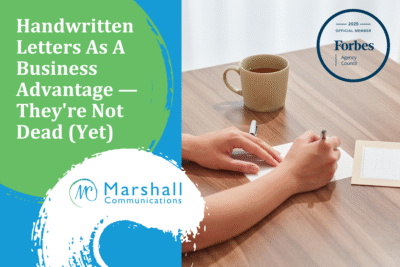These days, many social media platforms have become hubs for thought leadership, where subject matter experts go to educate the masses. From sharing beauty tips on Instagram to sports commentary on YouTube to political analysis on X, today’s thought leaders reach people in so many different ways.
But one platform cannot be discounted: LinkedIn. In recent months, LinkedIn has gained ground in terms of offering influencers the right platform to, well, influence. What was once primarily known as a job posting website where job seekers could go to find new opportunities is now something much more, competing with the likes of TikTok for attention from young people.
In addition to offering the usual blog posts, LinkedIn has been experimenting with short-form videos, allowing professionals to offer career advice and other insights via brief snippets. With catchy content, “LinkedIn influencers”—a phrase once thought unimaginable—can now get millions of views by telling people how to dress for a job interview or send in the right cover letter.
LinkedIn is also embracing artificial intelligence, empowering users to “try writing with AI” to create more compelling written content. This, in turn, can potentially help influencers amass more followers and emerge as go-to resources on matters of hiring, workplace trends and more.
LinkedIn’s Expanding Role in the Influence Ecosystem
It would sell LinkedIn short to suggest influencers on the platform can only influence on workplace matters. In truth, LinkedIn users can convey their thought leadership on a wide range of topics—from public relations in my case to luxury fashion, travel wisdom and more. Some of the world’s top LinkedIn thought leaders focus on subjects like branding and marketing, beyond anything related to career advice (although that is still relevant). One well-known LinkedIn influencer, Judy Robinett, lends her insights on entrepreneurship, investing and startup funding.
My point is that if you want to be a thought leader in your field, don’t discount LinkedIn content. Ironically, the influencers who are positioning themselves as branding experts are inherently reinforcing their own brands as “LinkedIn experts.” They are defining their brands and putting them into practice by teaching people about branding on social media—it becomes a self-fulfilling prophecy.
As someone who focuses on PR, marketing and branding myself, I have come to appreciate LinkedIn as not only a platform for compelling content but also a destination for connecting with others. If you know anything about me, you know I was born to be a connector.
LinkedIn is an important tool in the broader toolbox of networking; it’s where you can go to meet new people virtually, reinforce in-person connections and connect with followers who have never even met you face-to-face. I use LinkedIn to stay connected with new and old contacts from various stages of my life and career, in addition to lending expertise on certain topics.
The Power of Authenticity and Personal Branding
The key to any kind of social media influence is to differentiate yourself from the competition by using your own authentic, unique voice. I don’t want to be a dime-a-dozen thought leader on branding and marketing but rather lean into my own experiences to give people new bits of wisdom that they can’t find anywhere else. You can position yourself as an authority in a given field through content that is authentically and uniquely your own. That’s what it means to have a strong personal brand.
Did you ever notice that the word “author” is in the word “authority”? To be a true authority, you need to create your own authoritative content. Even if you write with AI, it is important to put that content in your own words. Whether it’s through drafting or editing, you need to shine through, not a machine.
Thought leaders are not lazy, relying on others to influence people. They use new-age tools to bring their own experience and expertise to the table.
Staying Ahead of the Curve on LinkedIn
Part of using new-age tools is keeping up with the times. As we’ve seen in recent months, platforms like LinkedIn are constantly evolving, taking cues from the likes of Instagram and TikTok to make their offerings more appealing to users. While LinkedIn is not moving away from written content, its experimentation with video content is a sign of the times, and thought leaders should adjust accordingly.
I haven’t created any LinkedIn videos yet, but I hope to start soon. The platform is also offering paid thought leader ads, which can be highly targeted at the audience you want to reach. Why not cater to the tens of millions of daily LinkedIn users in new ways?
In this day and age, people want to not only read your words but also see you “in the flesh” as an authentic, unique person they can know, like and trust. Encouraging people to know, like and trust you is essential for getting them to do business with you, or even to get them to watch a quick video. That’s the best way to deliver on your brand promise via social media.
If you’re a thought leader who isn’t keeping up with LinkedIn, you’re missing out. But luckily, it’s never too late to start.
This article originally appeared on the Forbes Agency Council CommunityVoice in November 2024.












